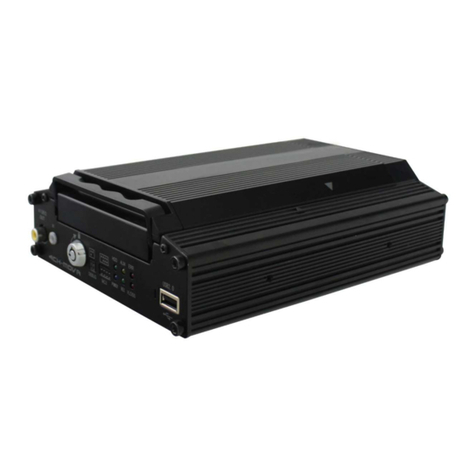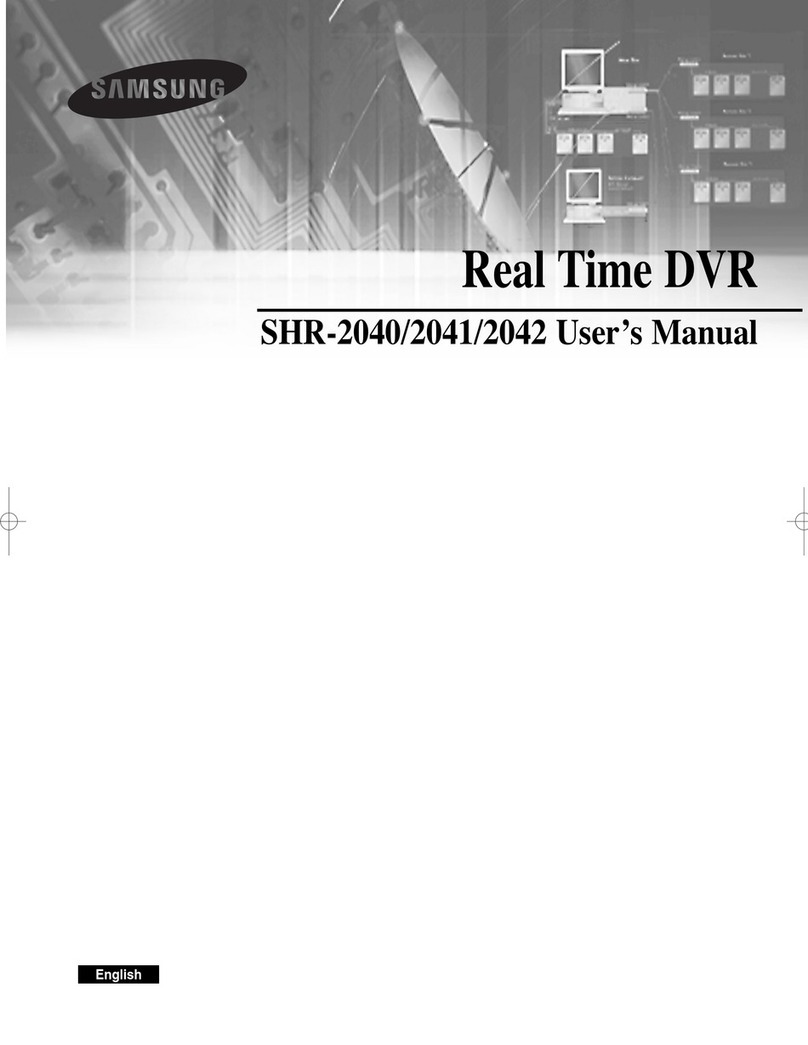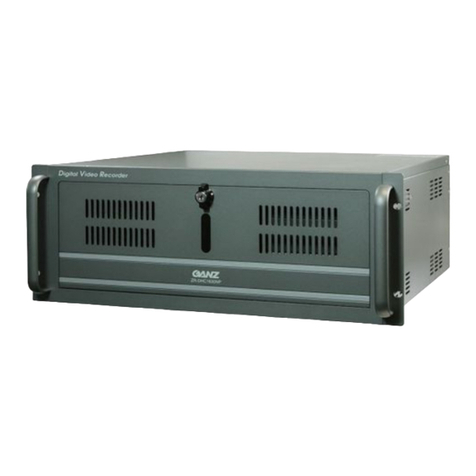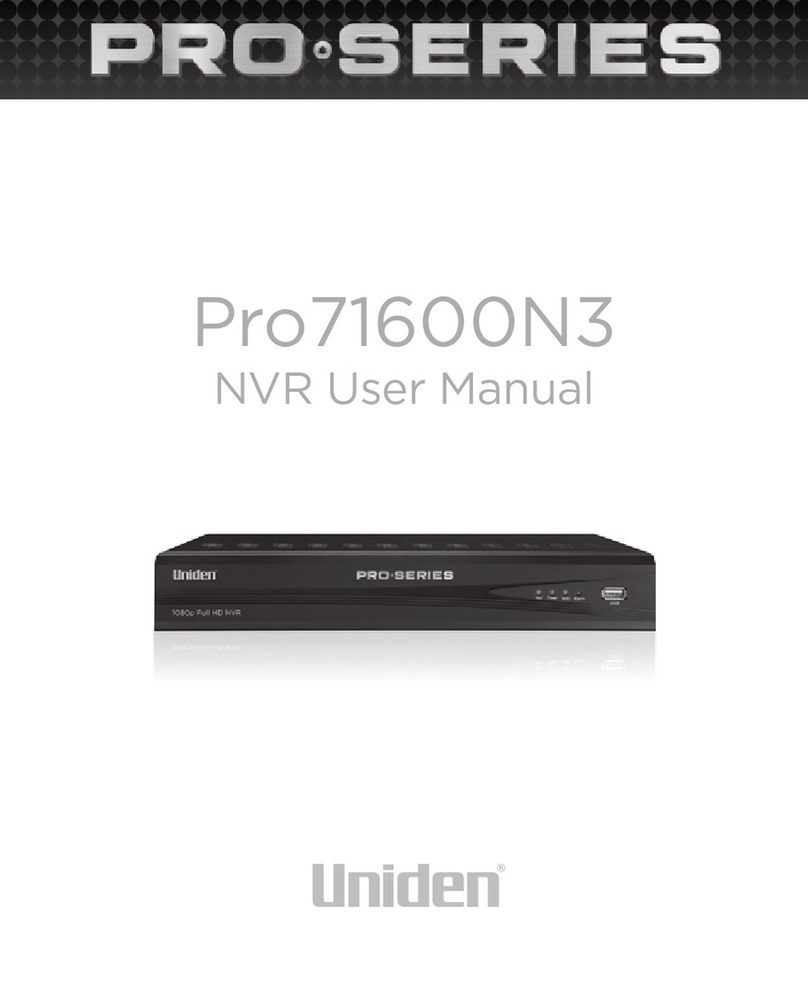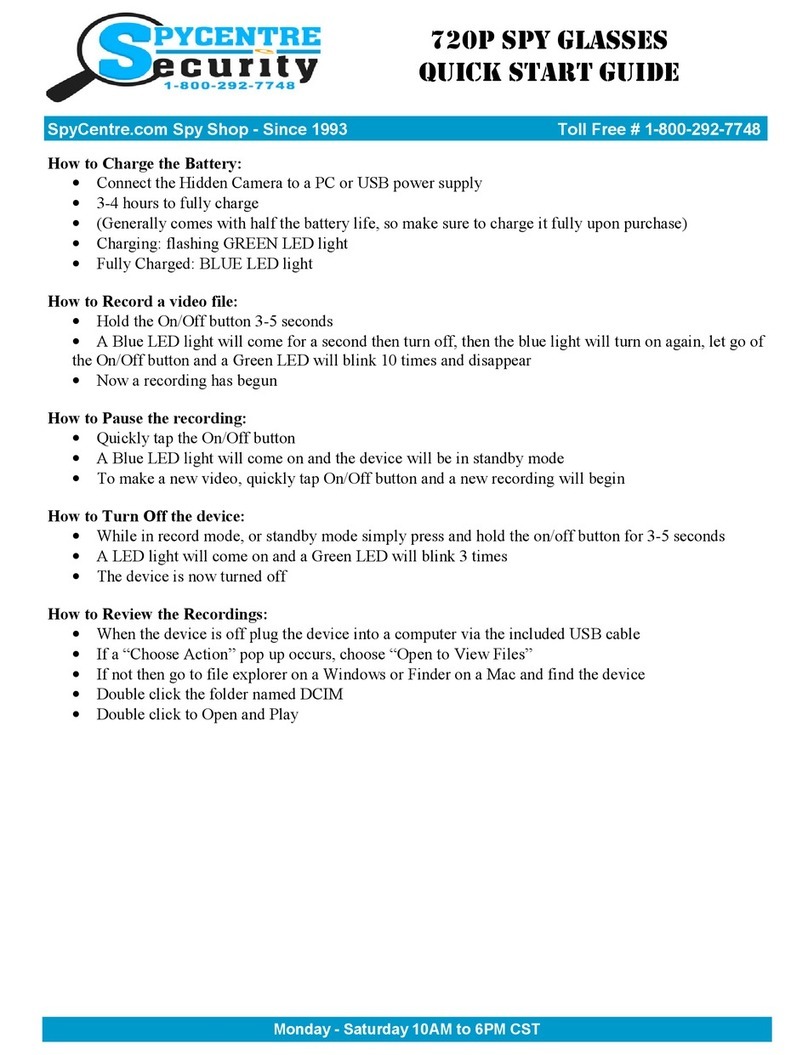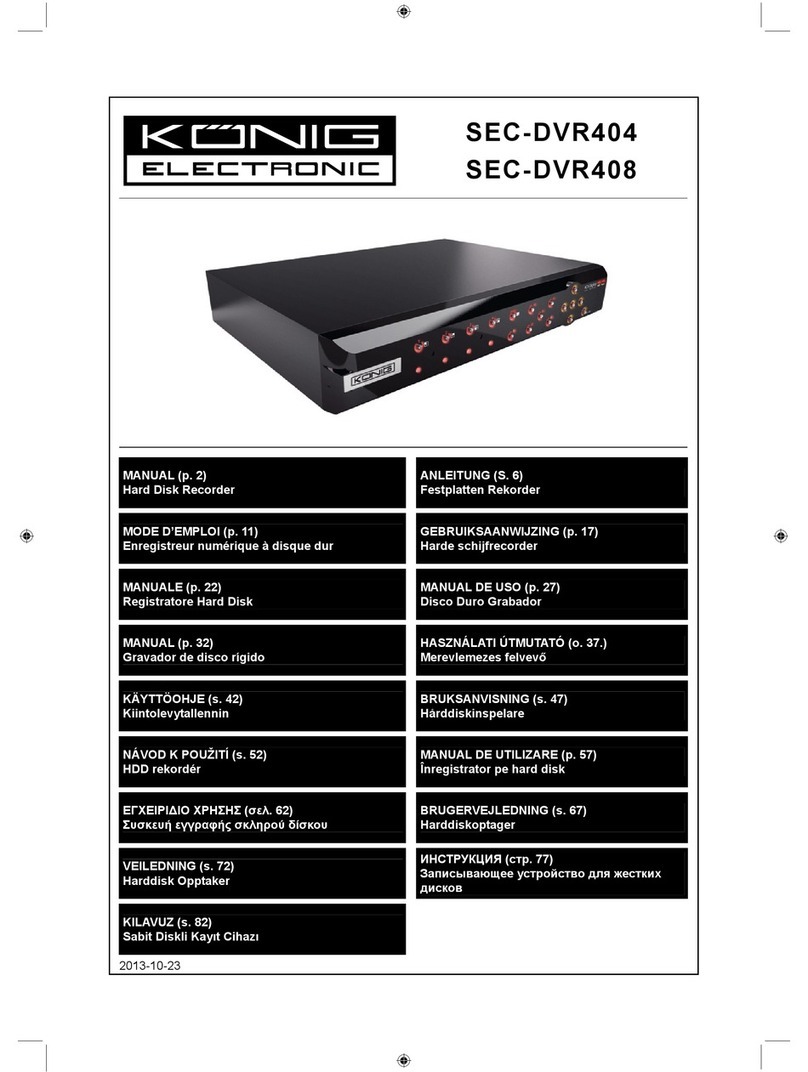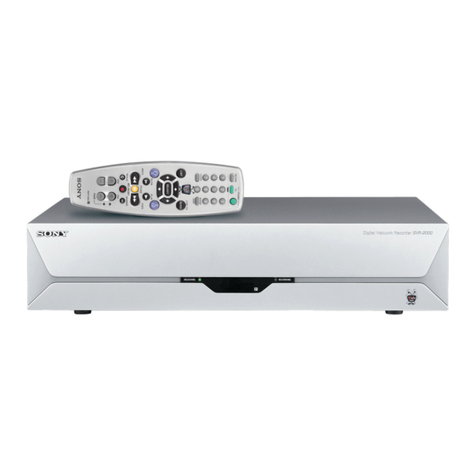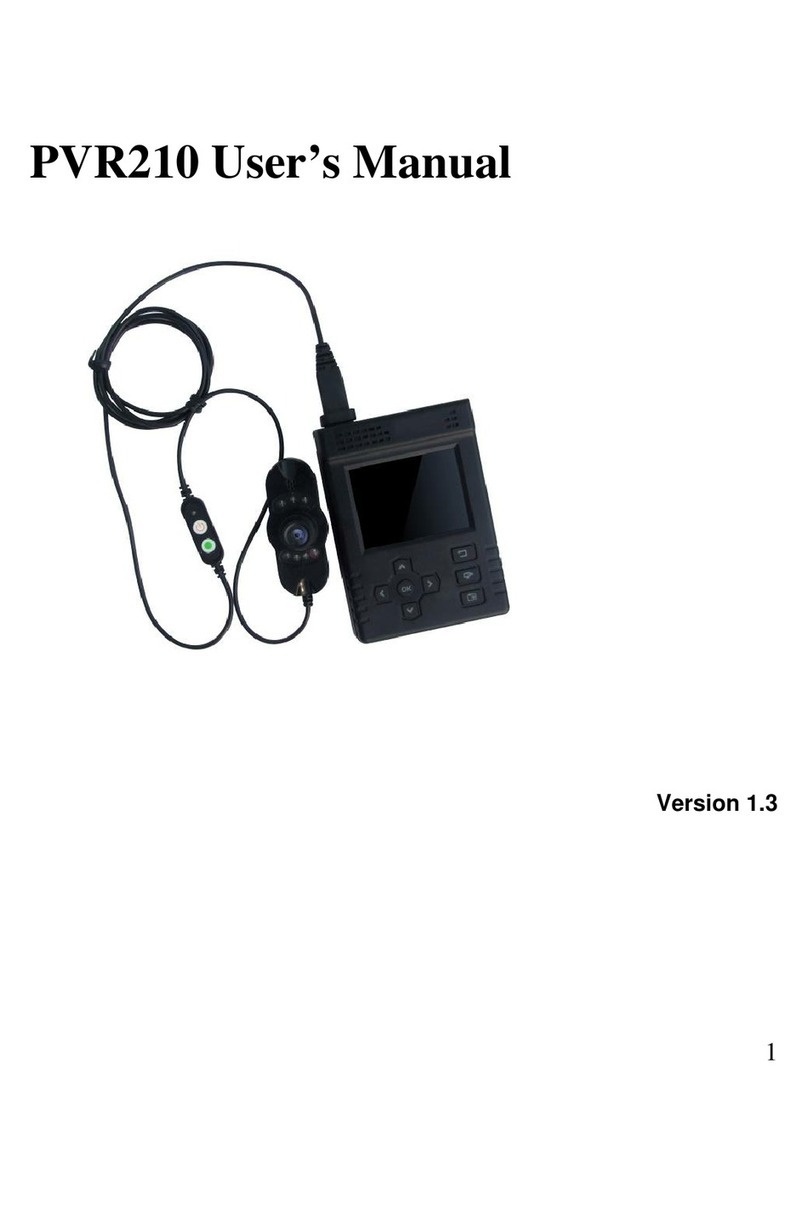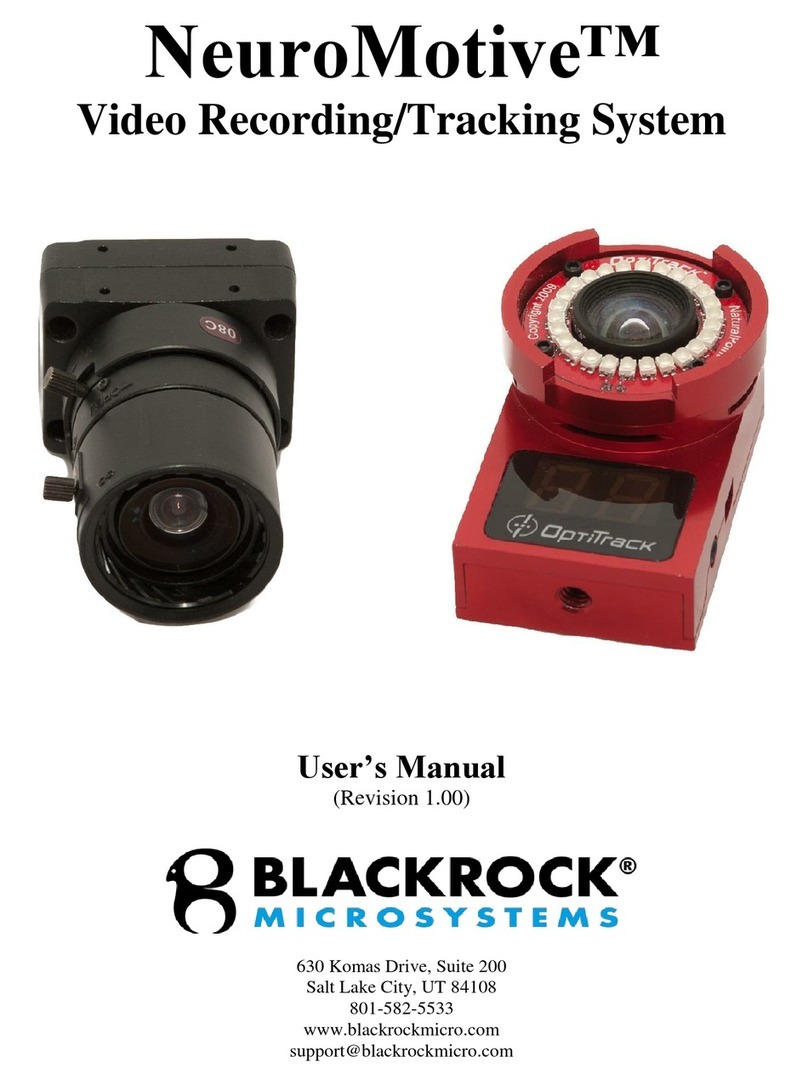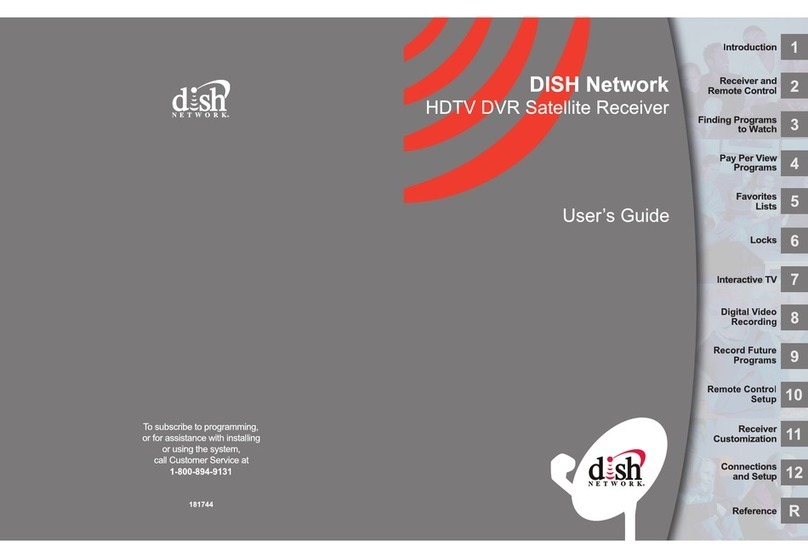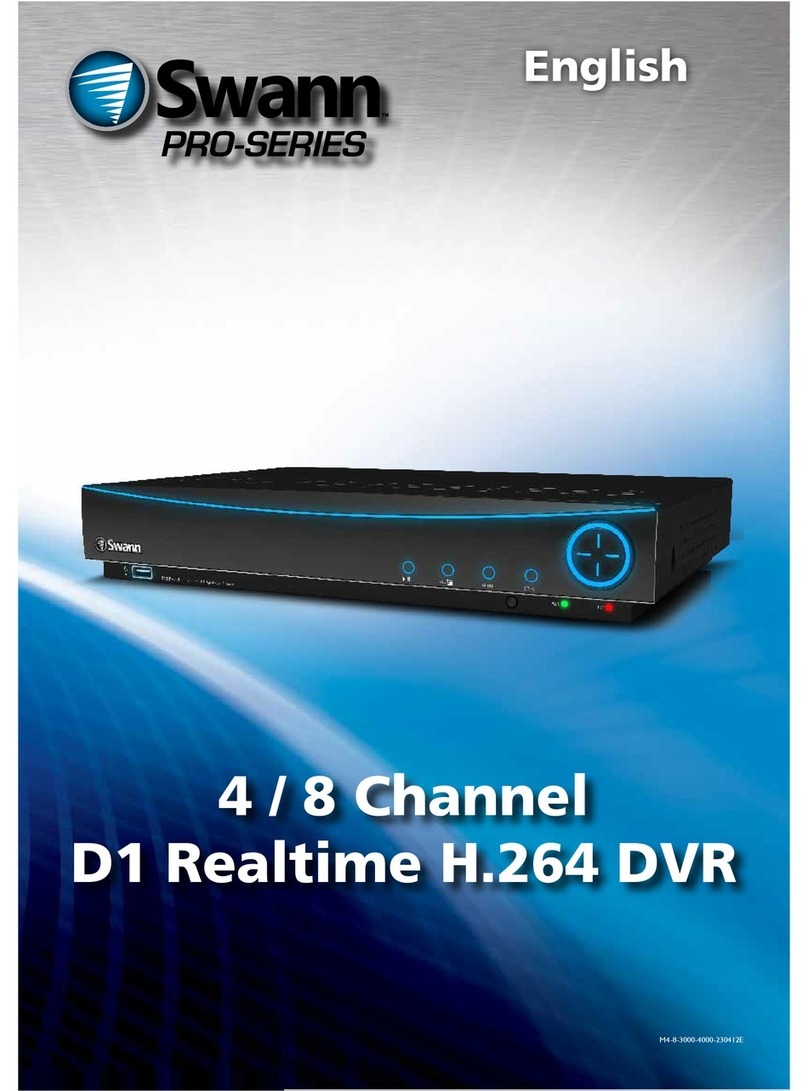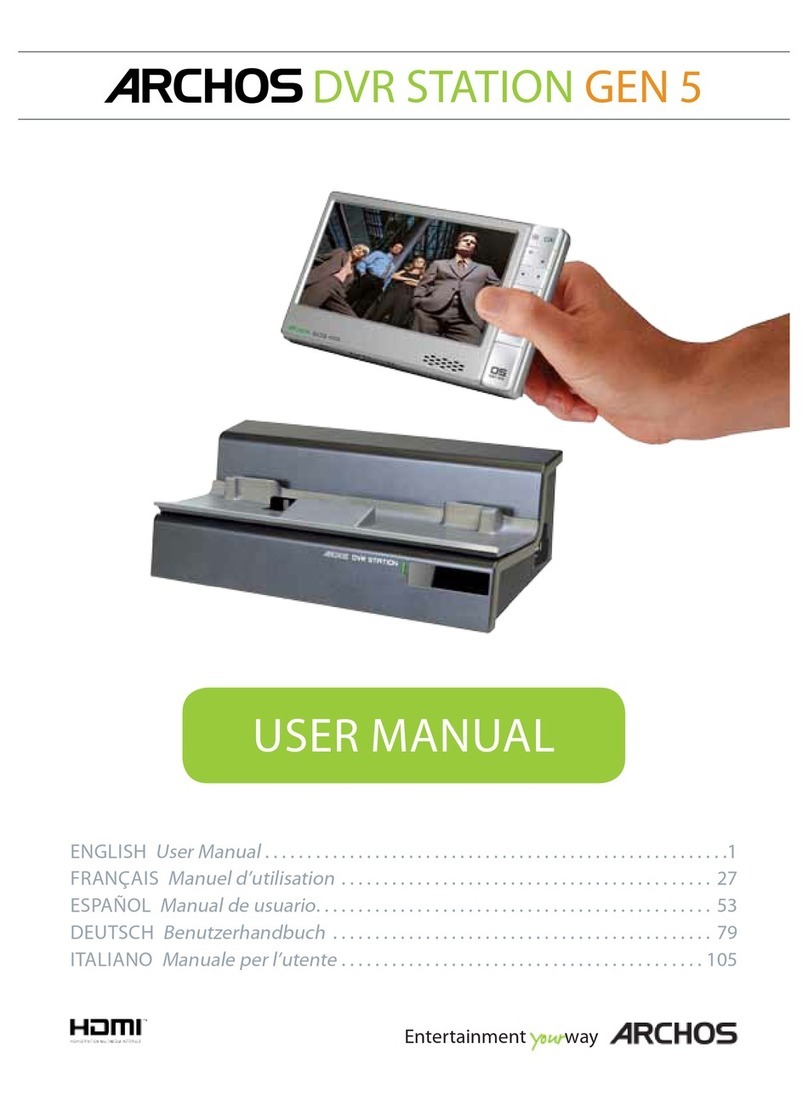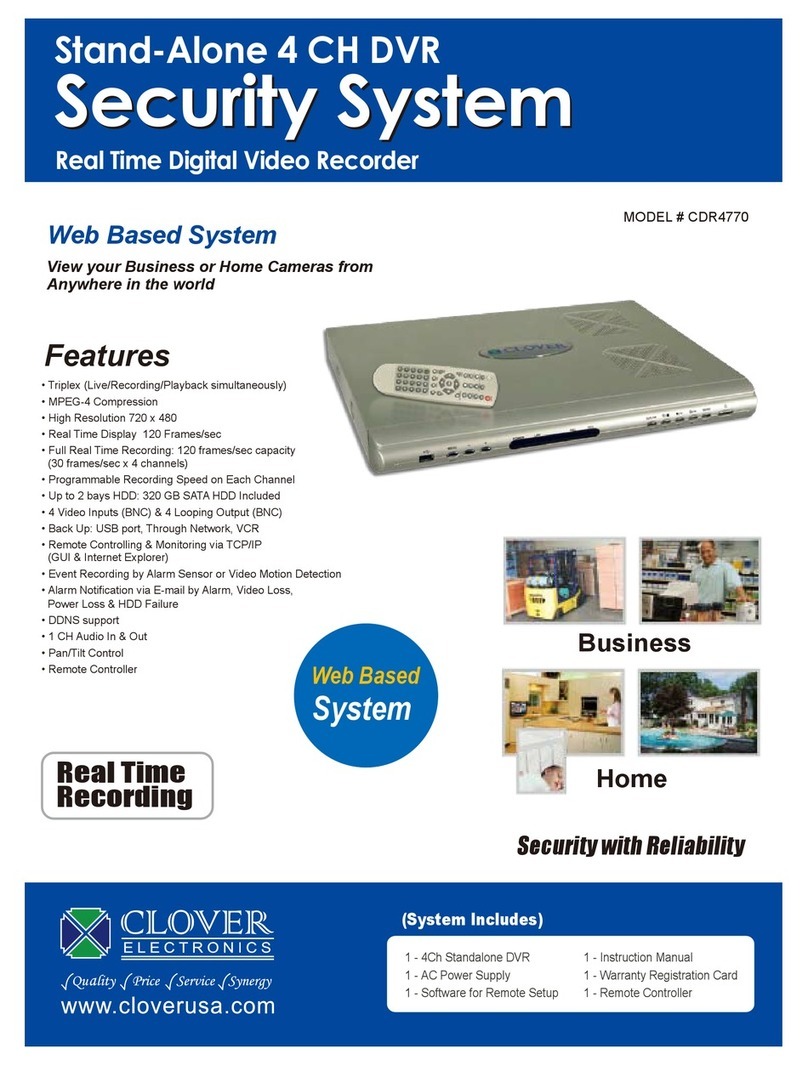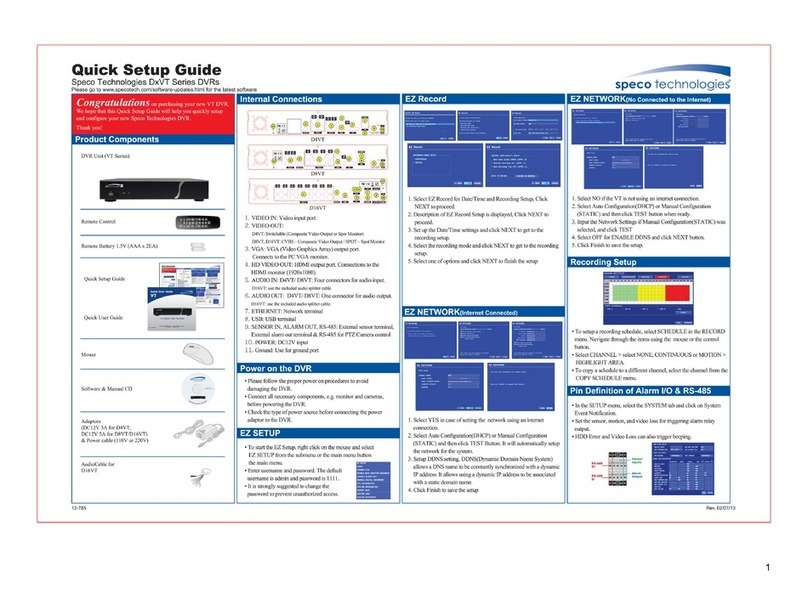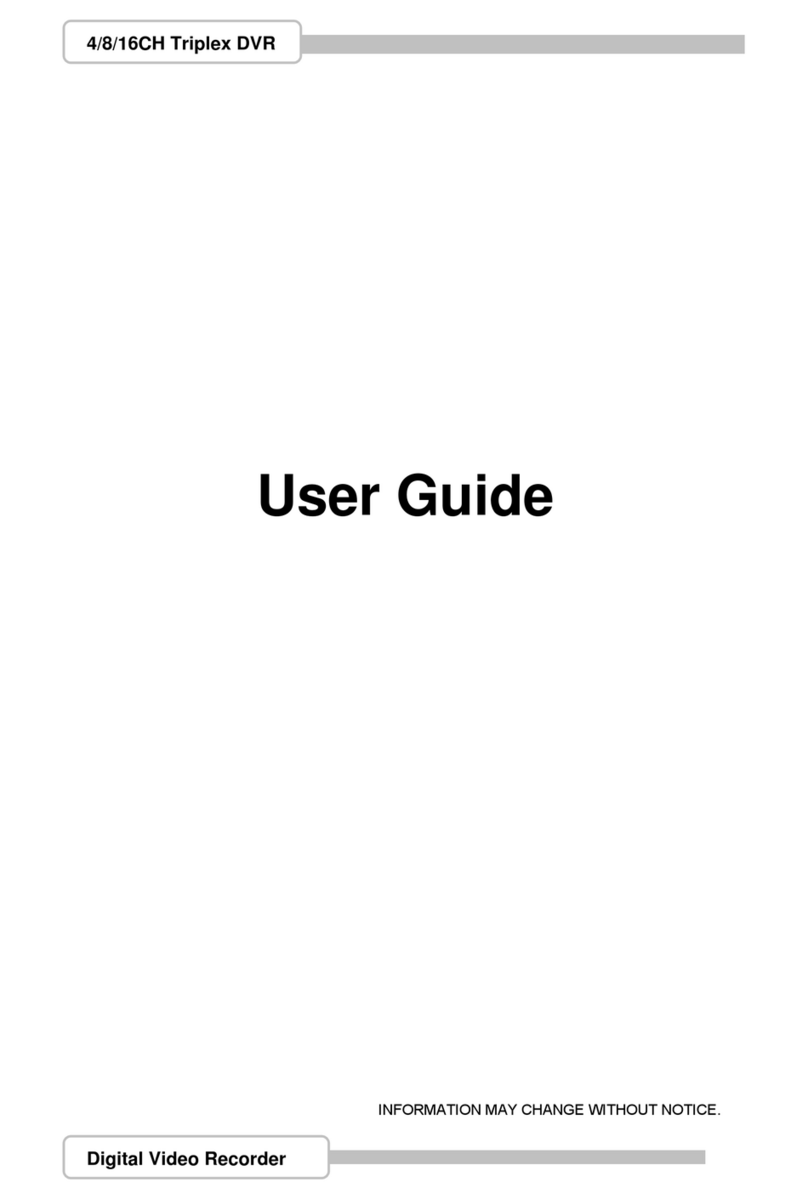Zenith HDR230 User manual

SERVICE MANUAL
Product Type: HD PERSONAL VIDEO
RECORDER & RECEIVER
Manual Series: HDR230
Manual Part #: 3829RVN006M
Model Line: A
Product Year: 2003
Summary 1
Exploded View 2
Electrical 3
Parts List 4
Published September 2003
by Technical Publications
Zenith Electronics Corporation
201 James Record Road
Huntsville, Alabama 35824-1513
Copyright © 2003 by Zenith Electronics Corporation
Model Series:
CONTENTS
HDR230
....................................................
...........................................
....................................................
....................................................

1-1
SECTION 1
SUMMARY
CONTENTS
OVERVIEW................................................................................................................1-2
PRODUCT SAFETY SERVICING GUIDELINES FOR VIDEO PRODUCTS............1-3
SERVICING PRECAUTIONS....................................................................................1-4
SPECIFICATIONS .....................................................................................................1-5
LOCATION OF CUSTOMER CONTROLS ...............................................................1-6

1-2
OVERVIEW
1.1 Explanation
- HD PERSONAL VIDEO RECORDER & RECEIVER or PVR(Personal Video Recorder)-STB(Set-Top Box)
stores video and audio data into HDD with a specific form while receiving the ground wave of HD digital
broadcasting only or gives additional related services.
- Configuration
It uses IBM PPC405GP of PowerPC series as CPU, which supports PCI Bus I/F for PVR. VSB section exe-
cutes VSB decoding for ATSC signal with IF(44MHz) as an input entered from the tuner and transfers TP
data by decoding ATSC signal via VSB decoding to PVR section and HD-1.
MPEG Decoder supports MP@HL by using HD-1 and uses an external AC-3 Decoder.
PVR section stores only necessary data of TP data from the digital TV signal into HDD via IDE I/F chip.
The overall structure is as follows:
- System section
CPU, Main Memory, MPEG-II Decoder, AC-3 Decoder, Flash Memory, Audio DAC, CPLD
- PVR section
PCI I/F, PDR-Pro executing TP De-Mux, Memory, IDE I/F Chip
- VSB section
Generate TP signal by transferring the IF of the desired channel from the RF signal received from the tuner
to VSB receiver.
- Front section
Receive various user key inputs and display the status of the set-top box on the LED.
- Power section
Supply the DC power to the main digital board and HDD by using AC 120V as an input.

1-3
IMPORTANT SAFETY NOTICE
This manual was prepared for use only by properly trained audio-video service
technicians.
When servicing this product, under no circumstances should the original
design be modified or altered without permission from Zenith Electronics
Corporation. All components should be replaced only with types identical to
those in the original circuit and their physical location, wiring and lead dress
must conform to original layout upon completion of repairs.
Special components are also used to prevent x-radiation, shock and fire haz-
ard. These components are indicated by the letter “x” included in their compo-
nent designators and are required to maintain safe performance. No deviations
are allowed without prior approval by Zenith Electronics Corporation.
Circuit diagrams may occasionally differ from the actual circuit used. This way,
implementation of the latest safety and performance improvement changes
into the set is not delayed until the new service literature is printed.
CAUTION: Do not attempt to modify this product in any way. Never perform
customized installations without manufacturer’s approval. Unauthorized modi-
fications will not only void the warranty, but may lead to property damage or
user injury.
Service work should be performed only after you are thoroughly familiar with
these safety checks and servicing guidelines.
GRAPHIC SYMBOLS
The exclamation point within an equilateral triangle is intended to
alert the service personnel to important safety information in the
service literature.
The lightning flash with arrowhead symbol within an equilateral tri-
angle is intended to alert the service personnel to the presence of
noninsulated “dangerous voltage”that may be of sufficient magni-
tude to constitute a risk of electric shock.
The pictorial representation of a fuse and its rating within an equi-
lateral triangle is intended to convey to the service personnel the
following fuse replacement caution notice:
CAUTION: FOR CONTINUED PROTECTION AGAINST RISK
OF FIRE, REPLACE ALL FUSES WITH THE SAME TYPE AND
RATING AS MARKED NEAR EACH FUSE.
SERVICE INFORMATION
While servicing, use an isolation transformer for protection from AC line shock.
After the original service problem has been corrected, make a check of the fol-
lowing:
FIRE AND SHOCK HAZARD
1. Be sure that all components are positioned to avoid a possibility of adjacent
component shorts. This is especially important on items trans-ported to and
from the repair shop.
2. Verify that all protective devices such as insulators, barriers, covers, shields,
strain reliefs, power supply cords, and other hardware have been reinstalled
per the original design. Be sure that the safety purpose of the polarized line
plug has not been defeated.
3. Soldering must be inspected to discover possible cold solder joints, solder
splashes, or sharp solder points. Be certain to remove all loose foreign par-
ticles.
4. Check for physical evidence of damage or deterioration to parts and compo-
nents, for frayed leads or damaged insulation (including the AC cord), and
replace if necessary.
5. No lead or component should touch a high current device or a resistor rated
at 1 watt or more. Lead tension around protruding metal surfaces must be
avoided.
6. After reassembly of the set, always perform an AC leakage test on all
exposed metallic parts of the cabinet (the channel selector knobs, antenna
terminals, handle and screws) to be sure that set is safe to operate without
danger of electrical shock. DO NOT USE A LINE ISOLATION TRANS-
FORMER DURING THIS TEST. Use an AC voltmeter having 5000 ohms per
volt or more sensitivity in the following manner: Connect a 1500 ohm, 10
watt resistor, paralleled by a .15 mfd 150V AC type capacitor between a
known good earth ground water pipe, conduit, etc.) and the exposed metal-
lic parts, one at a time. Measure the AC voltage across the combination of
1500 ohm resistor and .15 mfd capacitor. Reverse the AC plug by using a
non-polarized adaptor and repeat AC voltage measurements for each
exposed metallic part. Voltage measured must not exceed 0.75 volts RMS.
This corresponds to 0.5 milliamp AC. Any value exceeding this limit consti-
tutes a potential shock hazard and must be corrected immediately.
TIPS ON PROPER INSTALLATION
1. Never install any receiver in a closed-in recess, cubbyhole, or closely fitting
shelf space over, or close to, a heat duct, or in the path of heated air flow.
2. Avoid conditions of high humidity such as: outdoor patio installations where
dew is a factor, near steam radiators where steam leakage is a factor, etc.
3. Avoid placement where draperies may obstruct venting. The customer
should also avoid the use of decorative scarves or other coverings that
might obstruct ventilation.
4. Wall- and shelf-mounted installations using a commercial mounting kit must
follow the factory-approved mounting instructions. A product mounted to a
shelf or platform must retain its original feet (or the equivalent thickness in
spacers) to provide adequate air flow across the bottom. Bolts or screws
used for fasteners must not touch any parts or wiring. Perform leakage tests
on customized installations.
5. Caution customers against mounting a product on a sloping shelf or in a tilt-
ed position, unless the receiver is properly secured.
6. A product on a roll-about cart should be stable in its mounting to the cart.
Caution the customer on the hazards of trying to roll a cart with small cast-
ers across thresholds or deep pile carpets.
7. Caution customers against using extension cords. Explain that a forest of
extensions, sprouting from a single outlet, can lead to disastrous conse-
quences to home and family.
A.C. Voltmeter
1500 OHM
10 WATT
Place this probe
on each exposed
metal part.
Good Earth Ground
such as the Water
Pipe, Conduit, etc.
0.15uF
PRODUCT SAFETY SERVICING GUIDELINES FOR VIDEO PRODUCTS

1-4
SERVICING PRECAUTIONS
CAUTION: Before servicing the HD PERSONAL VIDEO
RECORDER & RECEIVER covered by this service data and
its supplements and addends, read and follow the SAFETY
PRECAUTIONS. NOTE: if unforeseen circumstances create
conflict between the following servicing precautions and any
of the safety precautions in this publications, always follow
the safety precautions.
Remember Safety First:
General Servicing Precautions
1. Always unplug the HD PERSONAL VIDEO RECORDER
& RECEIVER AC power cord from the AC power source
before:
(1) Removing or reinstalling any component, circuit board,
module, or any other assembly.
(2) Disconnecting or reconnecting any internal electrical
plug or other electrical connection.
(3) Connecting a test substitute in parallel with an elec-
trolytic capacitor.
Caution: A wrong part substitution or incorrect
polarity installation of electrolytic capacitors may result
in an explosion hazard.
2. Do not spray chemicals on or near this HD PERSONAL
VIDEO RECORDER & RECEIVER or any of its assem-
blies.
3. Unless specified otherwise in this service data, clean
electrical contacts by applying an appropriate contact
cleaning solution to the contacts with a pipe cleaner,
cotton-tipped swab, or comparable soft applicator.
Unless specified otherwise in this service data, lubrication
of contacts is not required.
4. Do not defeat any plug/socket B+ voltage interlocks with
whitch instruments covered by this service manual might
be equipped.
5. Do not apply AC power to this HD PERSONAL VIDEO
RECORDER & RECEIVER and / or any of its electrical
assemblies unless all solid-state device heat sinks are
correctly installed.
6. Always connect the test instrument ground lead to an
appropriate ground before connecting the test instrument
positive lead. Always remove the test instrument ground
lead last.
Insulation Checking Procedure
Disconnect the attachment plug from the AC outlet and turn
the power on. Connect an insulation resistance meter (500V)
to the blades of the attachment plug. The insulation resis-
tance between each blade of the attachment plug and acces-
sible conductive parts (Note 1) should be more than 1M-
ohm.
Note 1: Accessible Conductive Parts include Metal panels,
Input terminals, Earphone jacks,etc.
Electrostatically Sensitive (ES) Devices
Some semiconductor (solid state) devices can be damaged
easily by static electricity. Such components commonly are
called Electrostatically Sensitive (ES) Devices. Examples of
typical ES devices are integrated circuits and some field
effect transistors and semiconductor chip components.
The following techniques should be used to help reduce the
incidence of component damage caused by static electricity.
1. Immediately before handling any semiconductor compo-
nent or semiconductor-equipped assembly, drain off any
electrostatic charge on your body by touching a known
earth ground. Alternatively, obtain and wear a commer-
cially available discharging wrist strap device, which
should be removed for potential shock reasons prior to
applying power to the unit under test.
2. After removing an electrical assembly equipped with ES
devices, place the assembly on a conductive surface such
as aluminum foil, to prevent electrostatic charge buildup or
exposure of the assembly.
3. Use only a grounded-tip soldering iron to solder or unsolder
ES devices.
4. Use only an anti-static solder removal device. Some
solder removal devices not classified as “anti-static”can
generate electrical charges sufficient to damage ES
devices.
5. Do not use freon-propelled chemicals. These can
generate an electrical charge sufficient to damage ES
devices.
6. Do not remove a replacement ES device from its protec-
tive package until immediately before you are ready to
install it. (Most replacement ES devices are packaged with
leads electrically shorted together by conductive foam,
aluminum foil,or comparable conductive material).
7. Immediately before removing the protective material from
the leads of a replacement ES device, touch the protective
material to the chassis or circuit assembly into which the
device will be installed.
Caution: Be sure no power is applied to the chassis or
circuit, and observe all other safety precautions.
8. Minimize bodily motions when handling unpackaged
replacement ES devices. (Normally harmless motion such
as the brushing together of your clothes fabric or the lifting
of your foot from a carpeted floor can generate static elec-
tricity sufficient to damage an ES device.)

1-5
SPECIFICATIONS
Television System NTSC, DTV standard (1080i, 720p, 480p, 480i)
Channel Coverage Terrestrial: 2-69, Cable: 1-125
Input/ Output
ATSC ANT Input ANT IN (1) (ATSC-8VSB over CATV or Terrestrial)
ANT Loop Out Out To TV (1)
Component Video Output Component Out (1), Typical RCA Jack Connectors
1080i, 720p, 480p YPbPr
RGB Output RGB Out(1), 15-Pin connector
S-Video Output S-Video Out (1), 4-pin Mini-DIN
480i Y/C
Video Output Video Out (1), Typical RCA Jack Connectors
480i Composite
Digital Audio Output Coaxial, Optical (Dolby AC-3 output)
Analog Audio Output Audio Out (2) (Fixed Output Level or Variable Output Level)
Authorized Service Port 9-pin Serial Port (1)
Hard Disk Drive 80G Bytes
Recording Time About 9 hours (HD format), about 27 hours (SD format),
Dimension (W x H X D) 17 x 3 x 12.8 inches (430 x 76.5 x 326 mm)
Weight 7.7 lbs (3.5 kg)
Power Requirements AC 120V, 60Hz
Power Consumption 35W
Environment
Humidity 0 to 99 percent non condensing
Storage Temperature -20 to 60 degrees Celsius (-4 to 140 degrees Fahrenheit)
Operating Temperature 0 to 40 degrees Celsius (32 to 104 degrees Fahrenheit)
FRONT VIEW (HDR230)

1-6
REAR
AC Power Cord
ANT LOOP OUT
OUTPUT SELECTION
OPTICAL (Digital audio out jack)
COAXIAL (Digital audio out jack)
VIDEO OUT
YPbPr OUT
AUTHORIZED SERVICE ONLY
ANT IN
S-VIDEO OUT
AUDIO OUT (Left/Right)
RGB OUT
LOCATION OF CUSTOMER CONTROLS
Remote Control Sensor
Standby indicator
Display format indicator
Record indicator
Disk Full indicator
Reserved REC indicator
EXIT
SELECT
Arrow Buttons ( / / / )
MENU
GUIDE
RECORD
DISPLAY FORMAT
Power
FRONT

1-7
MODE
Numbers
Dash (-)
RECORD/EDIT
STOP
REPLAY
LIVE TV/END
TIMESHIFT
Component Control Buttons
Mode indicator
TV/INPUT
POWER
SELECT ( )
Arrow Buttons ( / / / )
(SELECT)
PAUSE
PLAY/SLOW
FF
REW
EXIT
MENU
CC
SIGNAL
GUIDE
RESERVED REC
PROGRAM LIST
REPEAT
RATIO
SURF
INFO
MUTE
VOL(Volume) (+/-)
CH (Channel) (+/-)
FLASHBK
REMOTE CONTROL

2-1
SECTION 2
CABINET & MAIN CHASSIS
CONTENTS
EXPLODED VIEWS .....................................................................................................................2-2
1. Cabinet and Main Frame Section ...........................................................................................2-2
2. Packing Accessory Section....................................................................................................2-3

2-2
EXPLODED VIEWS
1. Cabinet and Main Frame Section
463
280
260
A42
A49
A46
A47A
A44
300
250
320
468
468
463
463
463
464
463
463
464
457
465
466
452
A43
A47
452
463
A
5
4
3
2
1
BCD
NOTE) Refer to “SECTION 4 REPLACEMENT
PARTS LIST”in order to look for the
part number of each part.

2-3
2. Packing Accessory Section
808 BATTERY
REMOCON
INSTRUCTION ASSEMBLY
PACKING (RF)
BAG
CABLE
CABLE
CABLE
CABLE
PACKING (LF)
BOX CARTON
806
804
803
811
812
820
801
900
802
803

3-1
SECTION 3
ELECTRICAL
CONTENTS
1. WIRING DIAGRAM.............................................3-2
2. SYSTEM S/W UP-DATE & DIAGNOSTIC S/W..3-3
3. ELECTRICAL TROUBLESHOOTING
GUIDE .................................................................3-7
1) INITIAL...........................................................3-7
2) POWER(SMPS) PART ..................................3-8
3) SYSTEM PART............................................3-10
4) VIDEO PART................................................3-11
5) AUDIO PART ...............................................3-14
6) VSB PART ...................................................3-15
7) PVR PART ...................................................3-16
4. WAVEFORMS ...................................................3-17
1) DIGITAL SYSTEM [CLOCK GENERATOR]
PART............................................................3-17
2) DIGITAL SYSTEM [SYSTEM MEMORY]
PART............................................................3-19
3) VIDEO [PLL] PART .....................................3-21
4) VIDEO [OUTPUT CONNECTOR] PART.....3-23
5) AUDIO PART ...............................................3-25
6) PVR [CLOCK] PART...................................3-27
7) VSB [VSB DECODER] PART .....................3-29
8) VSB [DOWN CONVERTER] PART.............3-31
9) MICOM [DOWN CONVERTER] PART........3-33
5. VOLTAGE MEASURED VALUE.......................3-35
1) CAPACITOR ................................................3-35
2) DIODE..........................................................3-38
3) TRANSISTOR..............................................3-39
6. BLOCK DIAGRAMS .........................................3-40
1) OVERALL BLOCK DIAGRAM....................3-40
2) POWER BLOCK DIAGRAM .......................3-42
3) SYSTEM BLOCK DIAGRAM ......................3-44
4) VIDEO BLOCK DIAGRAM..........................3-46
5) VIDEO PLL BLOCK DIAGRAM..................3-48
6) AUDIO BLOCK DIAGRAM..........................3-50
7) TUNER/VSB & MICOM
BLOCK DIAGRAM ......................................3-52
8) PVR BLOCK DIAGRAM..............................3-54
7. CIRCUIT DIAGRAMS .......................................3-56
1) POWER CIRCUIT DIAGRAM......................3-56
2) SYSTEM CIRCUIT DIAGRAM 1 .................3-58
3) SYSTEM CIRCUIT DIAGRAM 2 .................3-60
4) SYSTEM CIRCUIT DIAGRAM 3 .................3-65
5) VIDEO CIRCUIT DIAGRAM 1.....................3-67
6) VIDEO CIRCUIT DIAGRAM 2.....................3-69
7) AUDIO CIRCUIT DIAGRAM........................3-68
8) PVR CIRCUIT DIAGRAM 1.........................3-70
9) PVR CIRCUIT DIAGRAM 2.........................3-72
10) VSB CIRCUIT DIAGRAM..........................3-74
11) AUDIO/VIDEO OUTPUT
CIRCUIT DIAGRAM ..................................3-76
12) POWER, IF, µ-COM, VIDEO
CIRCUIT DIAGRAM ..................................3-78
13) FRONT CIRCUIT DIAGRAM.....................3-80
8. PRINTED CIRCUIT DIAGRAMS ......................3-82
1) DIGITAL MAIN PRINTED
CIRCUIT DIAGRAMS(TOP) ........................3-82
2) DIGITAL MAIN PRINTED
CIRCUIT DIAGRAMS(BOTTOM) ................3-84
3) KEY(LEFT) PRINTED
CIRCUIT DIAGRAM ....................................3-86
4) KEY(RIGHT) PRINTED
CIRCUIT DIAGRAM ....................................3-86
5) POWER PRINTED CIRCUIT DIAGRAM.....3-88
9. REFERENCE ....................................................3-90
1) RESET BLOCK DIAGRAM .........................3-90
2) POWER BLOCK DIAGRAM .......................3-91

3-2
1. WIRING DIAGRAM
Power
Board
HDD
Digital
Board
Front Board
+12V
GND
+12V
Power On
Live +5V
GND
+3.3V
GND
+5V
GND
+3.3V
+3.3V
+5V
GND
+5.5V
+5.V
GND
GND
+12V
KEY 1
KEY 2
KEY 3
Live +5V
IR In
Full LED
RSV LED
REC LED
1080i LED
FRONT LED
Power LED
GND
Power
Switch
Board
GND
Power On Key
Control Signals
DATA[0~15] 16
13
GND 40
Total :80 Line
Total :15 Line
Total :13 Line
Total :4 Line
Main Power Connector
HDD Power Connector
HDD I/F Connector
Front I/F Connector
720P LED

3-3
2. SYSTEM S/W UP-DATE & DIAGNOSTIC S/W
• System S/W Up-date
1) Connect the serial cable between the connector for a service and the serial port of PC, and run TeraTerm
Program on the PC.
2) Switch to System Code Up-data mode by press select key and left Volume(F) key together at the front.
3) TeraTerm screen
- “Preparation for S/W Up-data is completed”message is displayed on the screen.
- Select ‘Send file’from File menu of TeraTerm and select the file for Up-data.
At this time, select ‘binary’from Option.
- The extension of this file is .phc.
4) Decompress this file at the system after this file is transmitted, and write it into the flash memory.
5) S/W is restarted after writing is done.
6) Check “S/W version”of “Troubleshooting”item from the setup menu whether the system code Up-date is
done.

3-4
•Using Diagnostic S/W
Preparation for diagnostic using test code stored at flash memory
1) At Power Up, connect the serial cable to the port for a service, place the cursor on TeraTerm screen, and
turn the power of HDR230 on with “Shift+T”of the PC keyboard pressed.
Parts possible to check during running Diagnostic S/W using Probe ROM or Test Code
======================================================
ROM TEST Program For HDR230 (2003/03/08)
======================================================
--------------------- System Info ----------------------
Processor = 405GP, PVR: 40110145
Processor speed = 200 MHz
PLB speed = 100 MHz
OPB speed = 33 MHz
Ext Bus speed = 33 MHz
PCI Bus speed = 33 MHz (Sync)
Amount of SDRAM = 32 MBytes
Internal PCI arbiter enabled
--------------------------------------------------------
Front B/D Init
******************* TEST MENU******************
1 - System SDRAM Test
2 - HD1 Memory Test
3 - HD1 DMA Test
4 - AC-3 Audio Decoder Test
5 - PCF8584 I2C(ATSC Tuner Test)
6 - CPU I2C(EEPROM/VSB/Front BD/TDA7440/SAA7120) Test
7 - PCI Device(PDR Pro / IDE Controller) Test
8 - IDE R/W Test
9 - Video Display Test
A - FLASH Memory Test
T - Device Total Test
B - FLASH Program from Serial port
C - Flash Program from HDD
->
Initial screen

3-5
Run the test by press “T”and then “Enter”key
============================System Test==============================
System SDRAM Test----------------------------->OK(32MB)
Flash Memory Test Start
....
Flash Memory Test----------------------------->OK
HD1 Test-------------------------------------->OK
Audio Decoder Test---------------------------->OK
HD1 DMA Test---------------------------------->OK
IIC EEPROM Test------------------------------->OK
VSB Test-------------------------------------->OK
TDA7440 Test---------------------------------->OK
SAA7120 Test---------------------------------->OK
Tuner IIC Test-------------------------------->OK
PDR-Pro Test---------------------------------->OK
IDE Device Test------------------------------->OK
HDD R/W Test--------------------------------->OK
Front Test----------------------------------->OK
Screen shot during Test

3-6
*************************System Test Result**************************
01. System SDRAM Test------------------------------>OK
02. Flash Memory Test--------------------------------->OK
03. HD1 Test---------------------------------------------->OK
04. Audio Decoder Test-------------------------------->OK
05. HD1 DMA Test-------------------------------------->OK
06 .I2C EEPROM Test--------------------------------->OK
07. VSB Test---------------------------------------------->OK
08. TDA7440 Test--------------------------------------->OK
09. SAA7120 Test--------------------------------------->OK
10. I2C Tuner Test-------------------------------------->OK
11. PDR-PRO Test-------------------------------------->OK
12. IDE Device Test------------------------------------>OK
13. HDD Read/Write Test----------------------------->OK
14. Front Test--------------------------------------------->OK
System test is passed successfully
*************************************************************************
Screen shot during Test
•Display “Error”when any error is occurred
At this time, you can easily find out the problem by concentrating on the section where the error is occurred.
The troubleshooting method for the error by each section can be concretely read at the following section.

3-7
3. ELECTRICAL TROUBLESHOOTING GUIDE
1) INITIAL
No
Yes
Yes
No
Yes
No
No
Yes
No
Yes
No
Yes
Yes
Front Power LED is
red?
Turn on the power switch
or Turn on the power switch
of the remote control
Check the display format LED
at the front and the output
selection switch at the rear
Check whether the cable
is correctly connected to
the monitor
Check whether the antenna
cable is connected to the
antenna input terminal at the rear.
Check whether the sound
output cable at the rear is
correctly connected.
Volume by the remote control
for the variable sound
Check whether the battery is
correctly inserted into the
remote control
Check whether the
external input terminal
of TV or monitor is
correctly selected
Power LED
Is flashing green
repeatedly for a
specific time
Channel
number is
displayed on the
screen.
Normal
screen is displayed.
The normal
sound is heard.
Change
the channel by the
remote control/You can
control the
volume
DTV section
Normally operated
Check whether the
power cord is connected
Power LED
Lights red
Check whether the battery is
correctly inserted into the
remote control

3-8
NO
NO
NO
NO
NO
NO
NO
NO
YES
YES
YES
YES
YES
YES
YES
YES
NO
YES
(1) No 5.0VA
Check or Replace
the D121.
NO
Check PWR CTL “H”
signal of µ-COM.
NO
YES
YES
YES
(2) No 5.4V
NO 5.0VA.
Is the F101 normal?
Is the TH01
normal?
Is the BD101
normal?
Is Vcc (14~22v) approved
to IC101 PIN3?
Are the D121
normal?
Does about 2.5V
appear to IC103 PIN1?
Is the D125/D126
normal?
Is the D123/D124
normal?
Replace the F101.
(Use the same Fuse)
Replace the
BD101.
Replace the TH01.
Is the D102
normal?
Check or Replace
the D102.
Replace the D121.
Replace the IC103.
Replace the
D125/D126.
Replace the
D123/D124.
Is Vcc (5.6v) approved
to Q151 Emitter?
Is Q152 Collector
is GND potential?
Check or Replace
the Q151.
Main PCB power short.
NO 5.4V.
2) POWER(SMPS) PART

3-9
NO
YES
YES
YES
(3) No 3.3V
NO 3.3V.
Is there about 3.5V at
the IC155/IC156 Pin1?
Is there about 4.5~5V at
the IC155/IC156 Pin1?
Check or Replace
the IC155/IC156.
Check or Replace
the D123/D124.
NO
Check the µ-com pin
PWR CTL signal
NO
YES
YES
YES
(4) No 12V
NO 12V.
Is there about 14V at
the IC157/IC158 Pin1?
Is there about 4.5~5V at
the IC157/IC158 Pin4?
Check or Replace
the Q157/IC158.
Check or Replace
the D125/D126.
NO
Check the µ-com pin
PWR CTL signal
Other manuals for HDR230
1
Table of contents
